Indonesia: Java, Bali, and Komodo Islands - September 10 - October 2, 2017
Part Two - Bali, Indonesia
Page Four - Coffee Plantation & Kintamani Volcano area
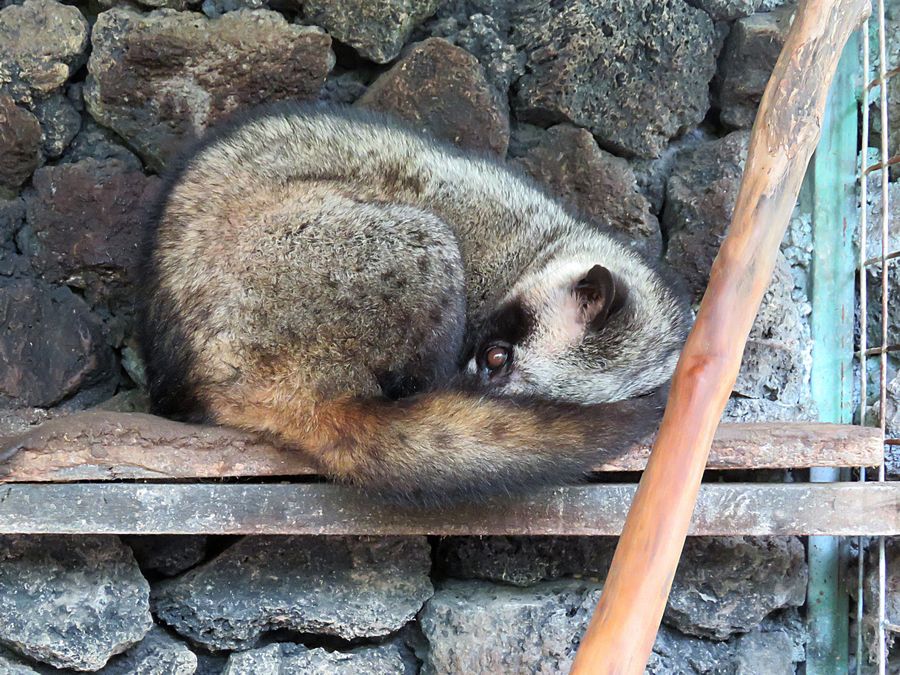
From our hotel in Ubud, we drove to a coffee plantation to learn about
the cultivation process
of kopi luwak, or civet coffee,
supposed to be the world's most expensive
coffee. This photo of a civet, one of several we saw there,
was taken from the walkway through forest to the facility.
See later explanation of their role in coffeemaking.
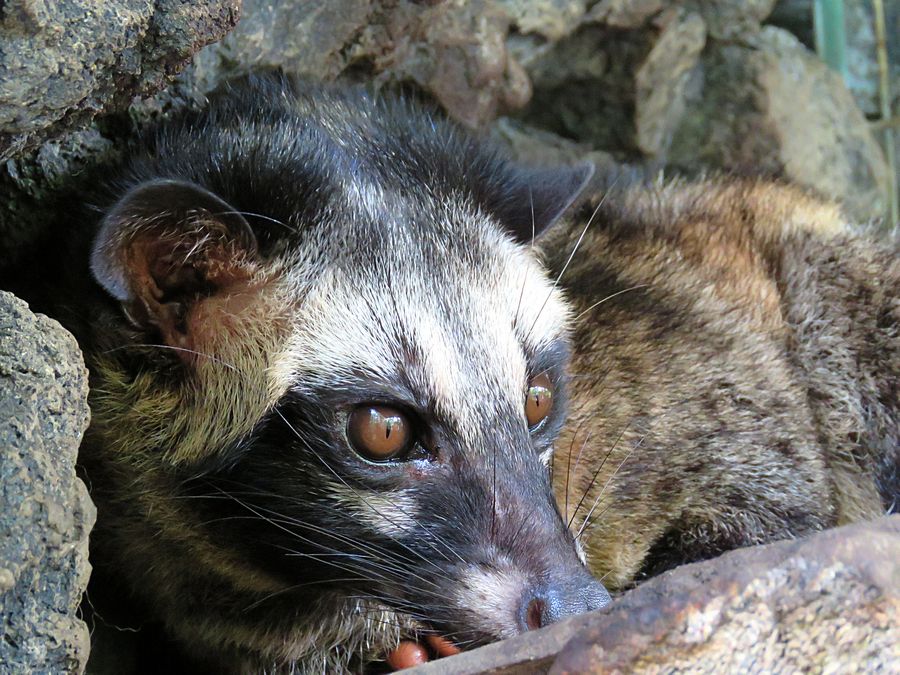
Indonesia is about the fourth largest producer of coffee in the world.
Coffee in Indonesia began with its colonial history, and has played an
important part in the growth of the country. Indonesia is located within
an ideal geography for coffee plantations, near the equator and with
numerous mountainous regions across the islands, creating well suited
micro-climates for the growth and production of coffee.
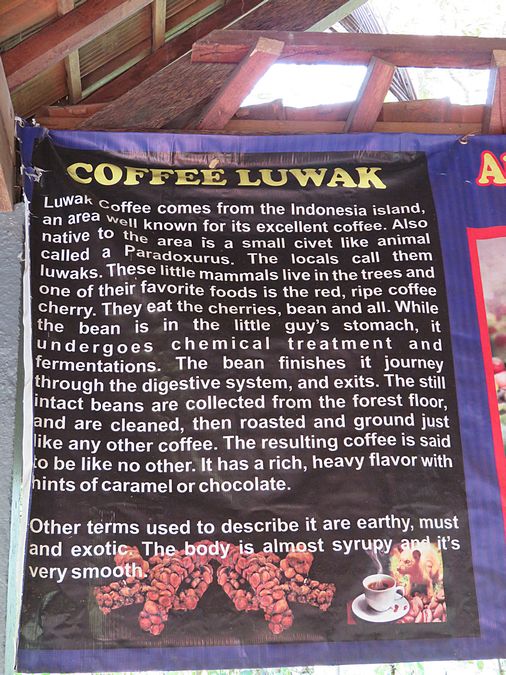
The description on site of how civets are used to produce Luwak Coffee.
I do agree with the description that says the resulting coffee is said to be
like no other. Although it is the most expensive coffee in the world, it is
maybe the worst coffee I have ever tasted.
Of course, some people
love it.
I did buy some other type of
coffee they made,
coconut coffee, which I liked.
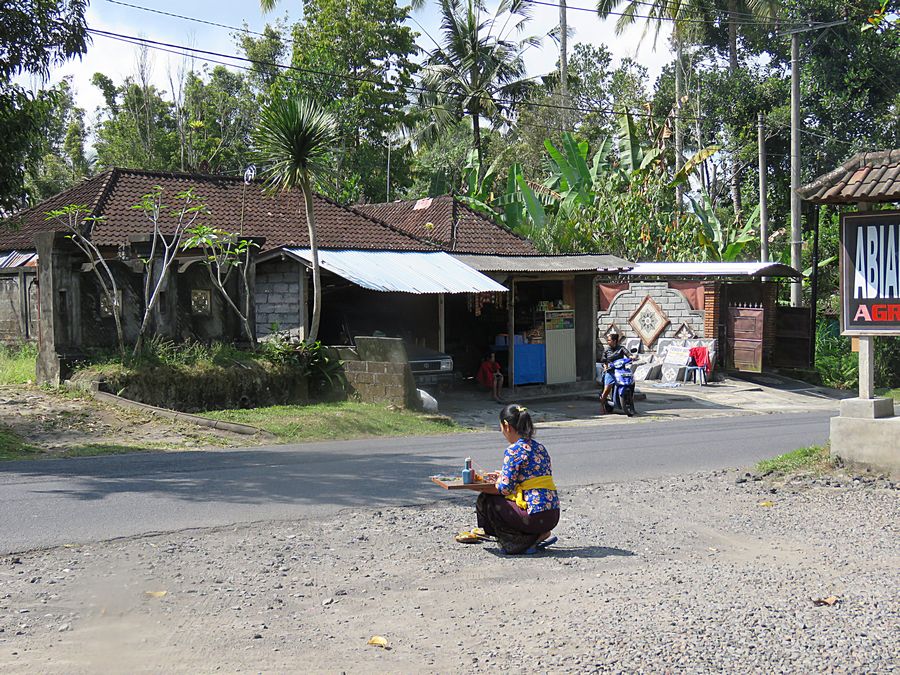
As we were leaving the coffee plantation, we saw a woman
putting out the daily offering, per Balinese Hindu tradition.

Kintamani Volcano area

Lake Batur.
Mount Batur, also known as Kintamani, is an active volcano
located at the center of two concentric calderas northwest of Mt. Agung on the island
of Bali.
The southeast side of the larger caldera contains a caldera lake, Lake Batur.

View of Mt. Batur
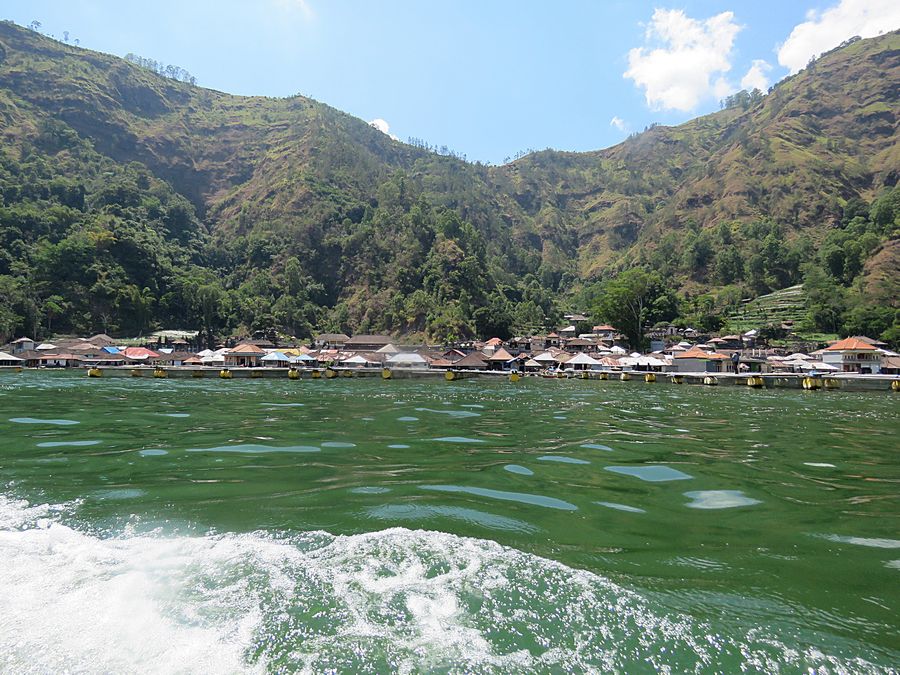
We rode motorboats to the village of Trunyan, seen here.
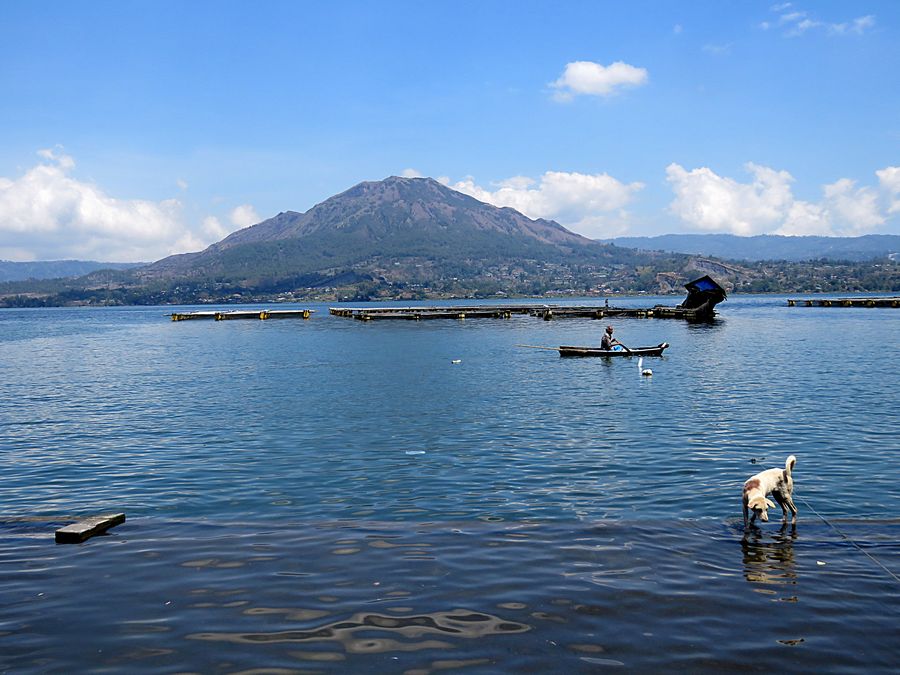
Mt. Batur from Trunyan village.
Fishing nets out in the water.
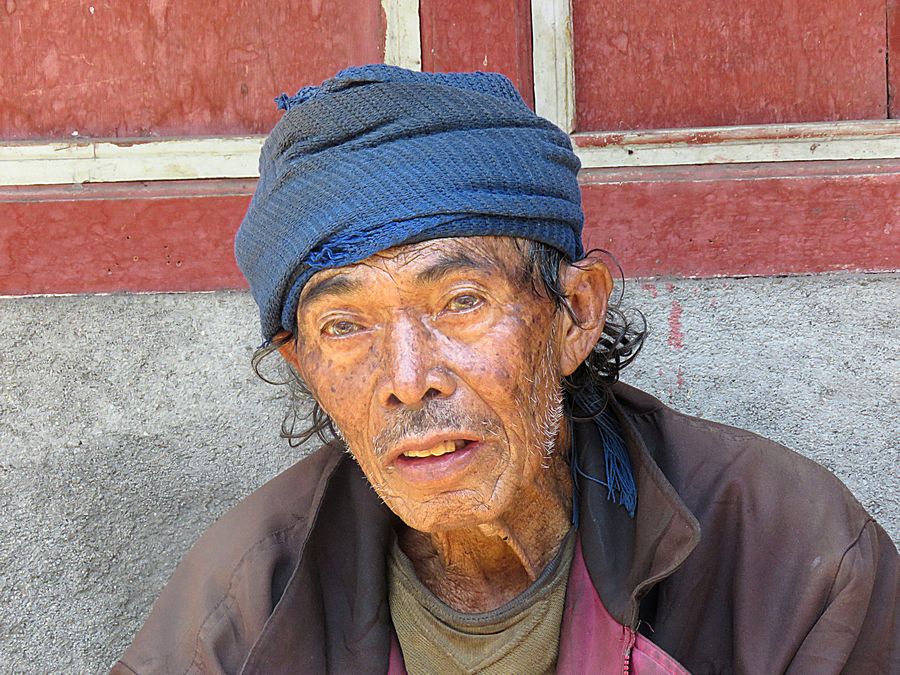
Elderly man in village of Trunyan
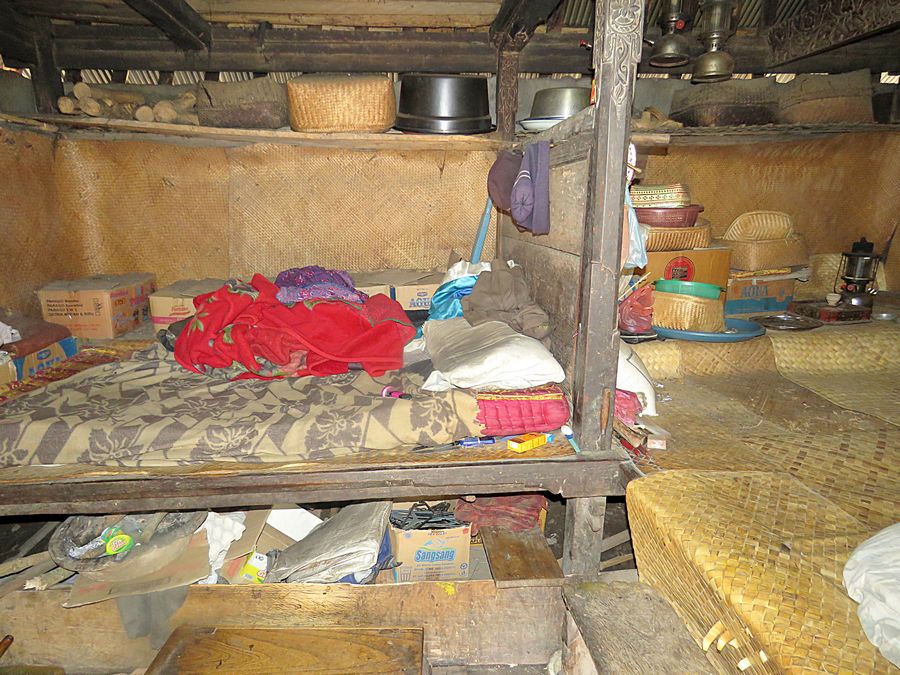
View inside his home.

Young boy from the village
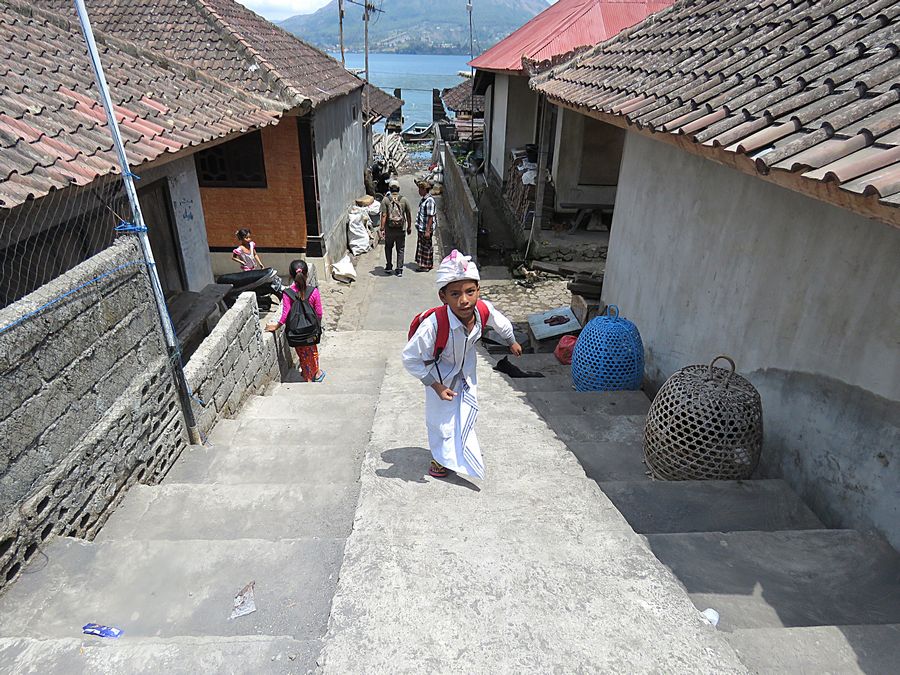
Lane in the village leading down to Lake Batur
Roosters are in the baskets along the steps.
Rooster fighting is illegal, but it is still done.

Woman cooking at her home in the village

We left Trunyan to ride via motorboat to the nearby burial area.
Trunyan is home to the
Bali Aga ethnic group, known for their ancestral rituals.
Unlike Balinese
tradition, the people do not practice cremation.
They display their dead in
open graves, concealed by bamboo lattices. The dead are
somewhat
preserved by the roots of the fragrant taru menyan tree.
Bali Aga people practice ancient rituals which predate
the arrival of Hinduism or Buddhism.
Above and below are figures at the entrance to the grave area.
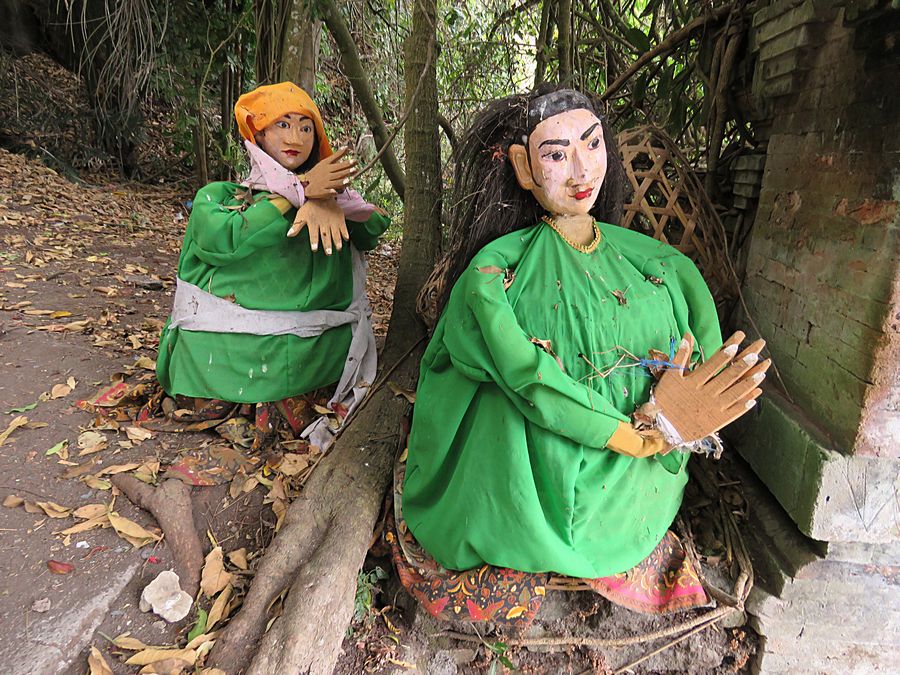
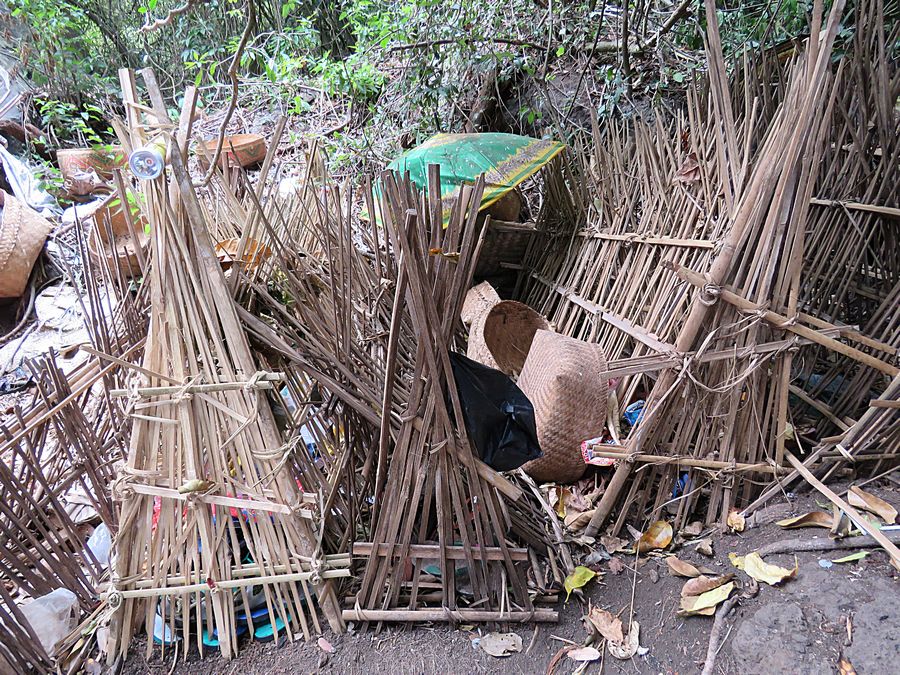
Recent bodies buried in bamboo lattices
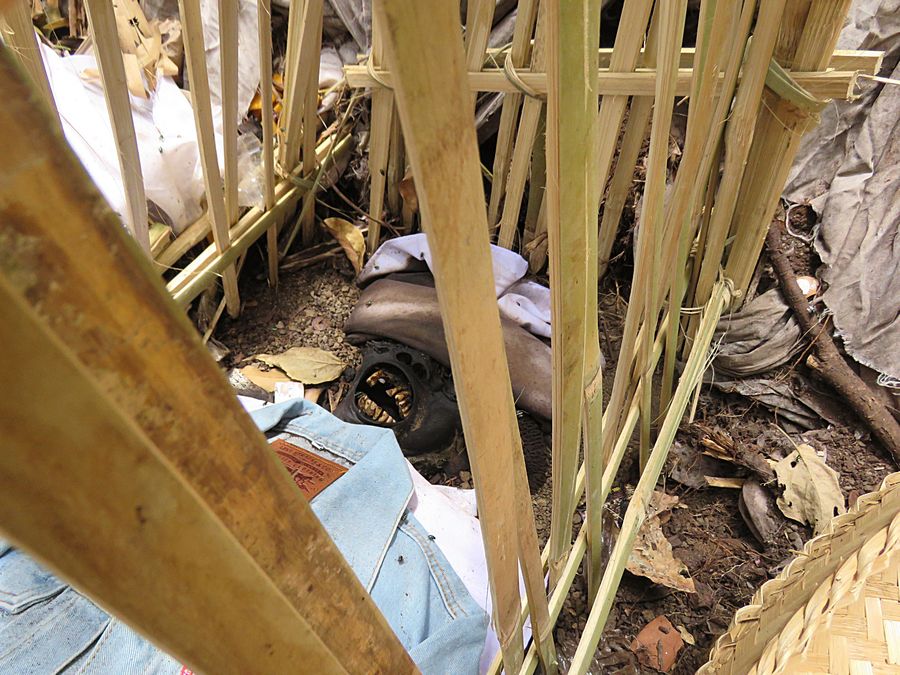
One of the bodies.
When a corpse has fully decomposed, the skull is placed
on a stair-shaped stone altar
which is located nearby.
Only the bodies of married couples are allowed to be treated like this.
If the deceased is not married, the body is buried at a cemetery.
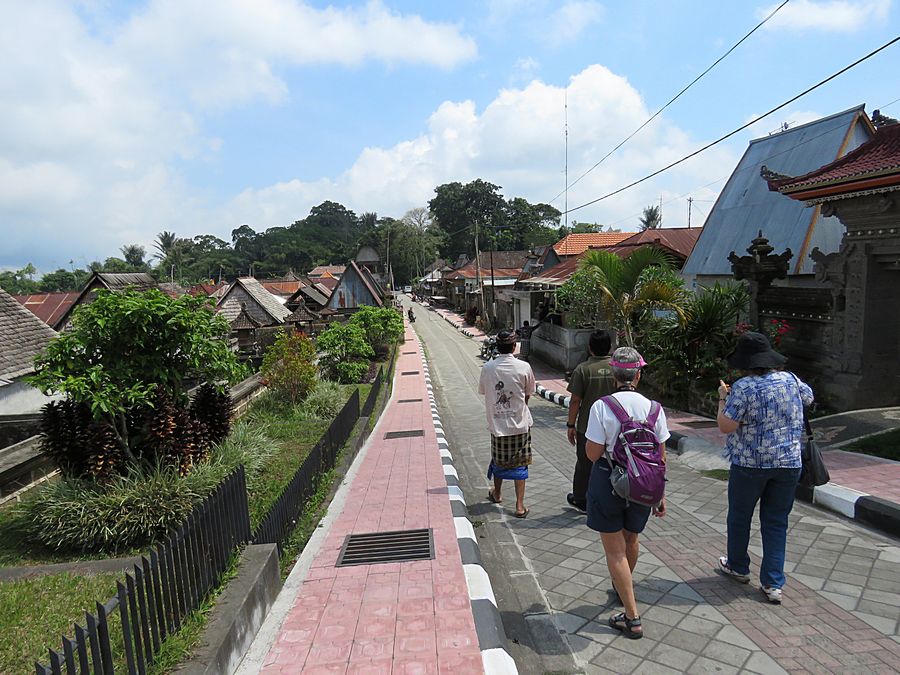
After lunch, we travelled to Bayung Gede, a mountain village with the unique
practice of placing the placentas of newborn babies inside coconuts and
hanging them from bungkak trees. This practice reflects a traditional belief
that these sources of fetal nourishment should not be discarded.
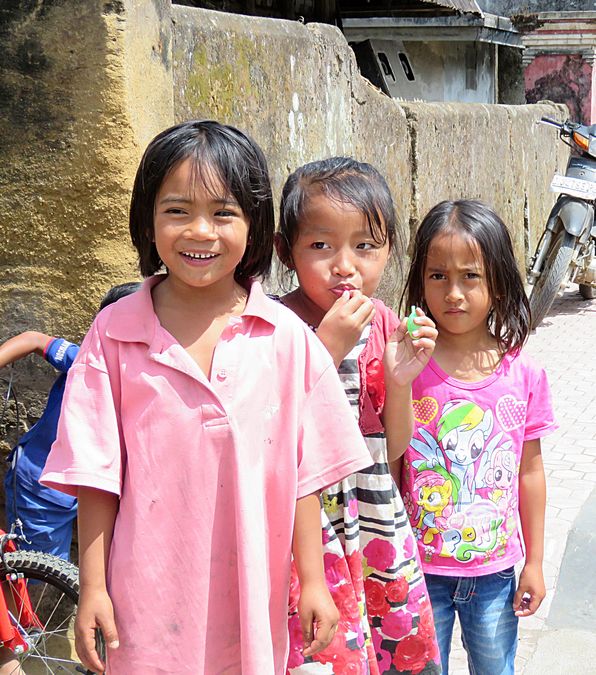
Village kids
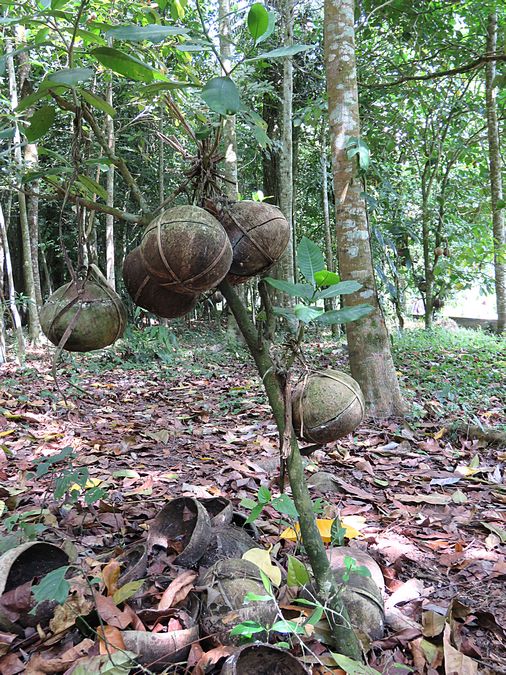
Placenta hung on the tree inside coconuts
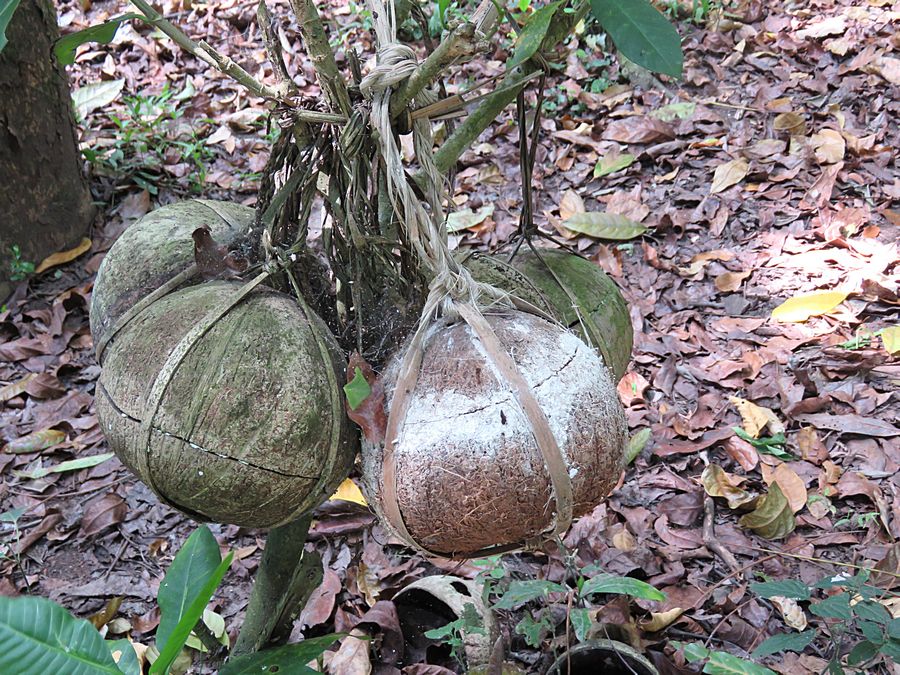
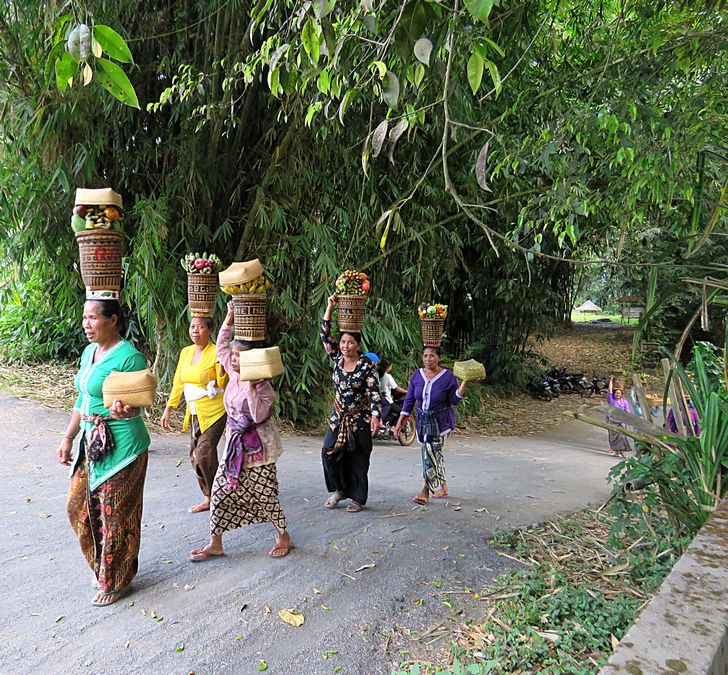
Women in Bayung Gede village coming with offerings
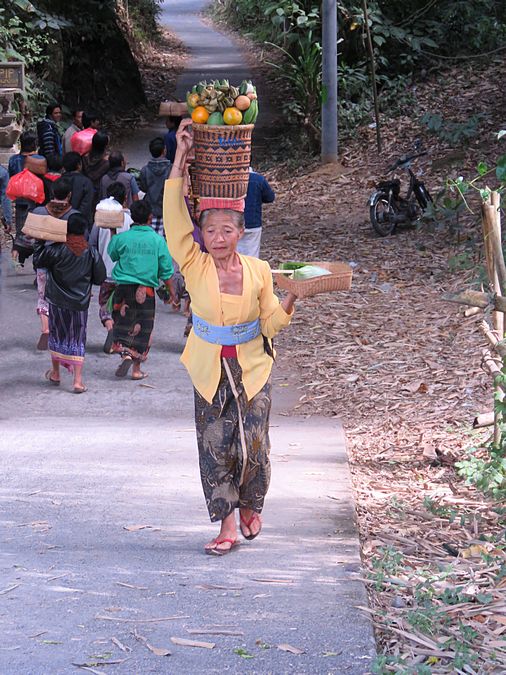
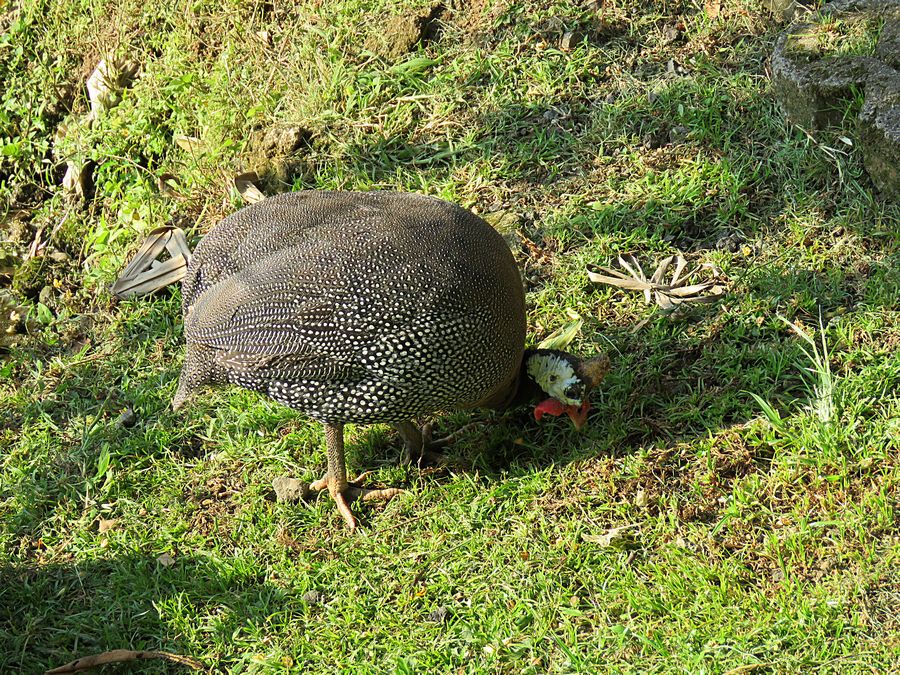
Back in Ubud, Bali - a helmeted guineafowl roaming
the grounds of Plataran Ubud Resort
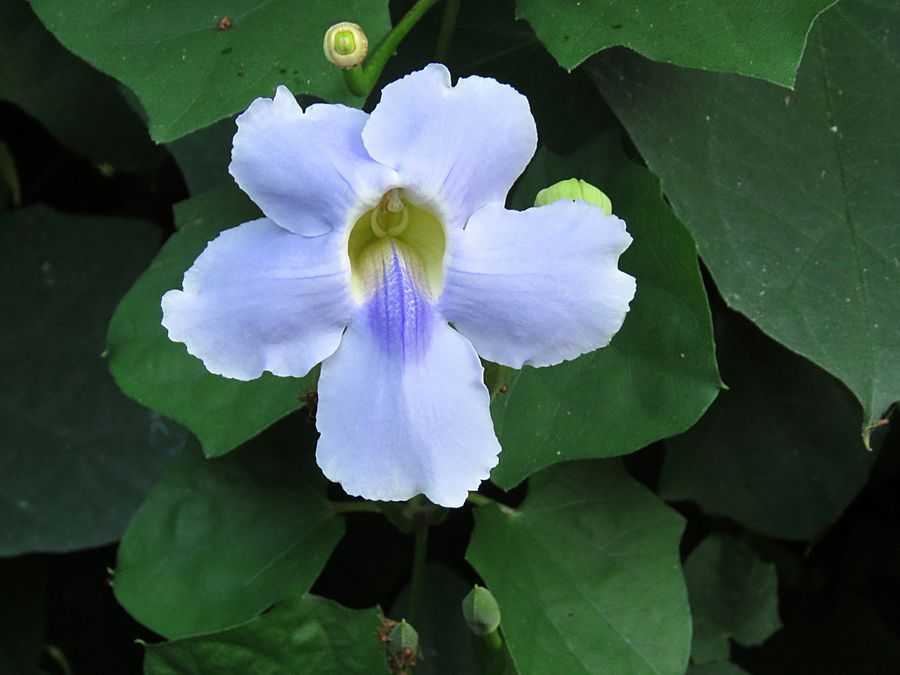
The hotel grounds had beautiful flowers.
Link to Part Two, Page 5 - Ubud, Bali
Pat's Home Page